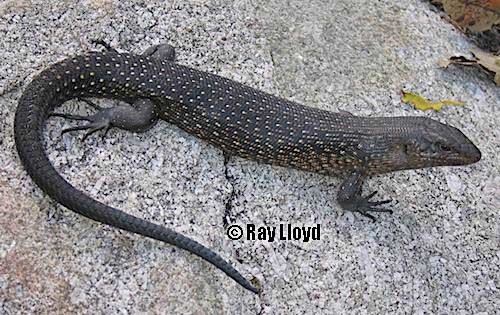Kingdom Animalia Class Reptilia Family Scincidae Scientific name Egernia kingii | Phylum Chordata Order Squamata Genus Egernia Rank Species | |
 | ||
Similar Egernia, Egernia major, Cunningham's skink, Egernia striolata, Western blue‑tongued lizard | ||
King s skink egernia kingii
Egernia kingii, King's skink, is a species of skink native to coastal regions of south-western Australia common on Rottnest Island and Penguin Island and some coastal areas with open forest and open heath. It is a large, heavy-bodied black skink that can reach a length of 55 centimetres (22 in) with a mass of 220 grams (8 oz).

This reptile is omnivorous and consumes mostly softer plant matter from the range of local vegetation, but supplements its diet with insects and bird's eggs. They are prey for many animals including tiger snakes (Notechis spp.).

A traditional name for the species is wandy, given by the Nyungar people of south west Western Australia. The first European to draw a King's skink was the artist and naturalist Ferdinand Bauer who made a detailed drawing of one during Flinders' expedition in 1801.

Like many skinks, they are viviparous and after a gestation period of 20 – 22 weeks. give birth to litters of 2 - 8 young that have a typical mass of 7 grams (0.25 oz). Juvenile mortality is high and growth to adult size is slow, so mature King's skinks can be quite long lived.

The specific name, kingii, is in honor of Australian Phillip Parker King, who explored the coast of Australia while he was an officer in the Royal Navy.

